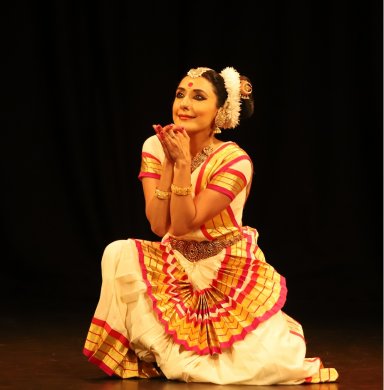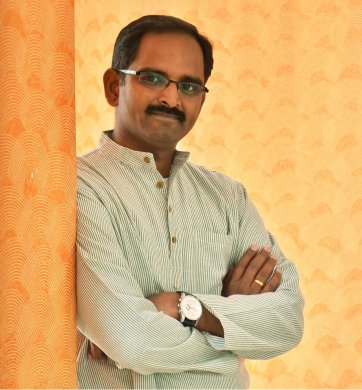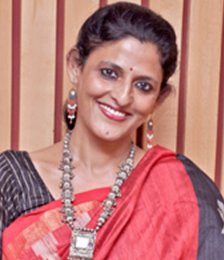
|
 |

|
 |
One Year Frame - Lockdown Technology for dance or Dance for Technology? - Navina Jafa e-mail: navina.jafa@gmail.com March 8, 2021 "Imagine, if you can, a small room, hexagonal in shape, like the cell of a bee. It is lighted neither by window nor by lamp, yet it is filled with a soft radiance. There are no apertures for ventilation, yet the air is fresh. There are no musical instruments, and yet, at the moment that my meditation opens, this room is throbbing with melodious sounds. An armchair is in the centre, by its side a reading desk - that is all the furniture. And in the armchair there sits a swaddled lump of flesh - a woman, about five feet high, with a face as white as a fungus. It is to her that the little room belongs." (E.M. Foster, 'The Stop Machine.') The small, short story written by E.M. Foster in 1909 rings true for the human community today, as it did one century ago. Compelled to adjust to an alternate, framed world, 'Lockdown' for almost a year, human beings struggle to survive. Foster has several farsighted notions, including mechanisms for prompt instant communication message systems and even the idea of 'cinematophoes' that convey visual images. Technology in the virtual space remains the single most powerful modality for the human community to assert their social and economic existence. "We are in an unprecedented situation, and the normal rules no longer apply. We cannot resort to the usual tools in such unusual times. The creativity of the response must match the unique nature of the crisis...," says UN Secretary-General Antonio Guterres. COVID-19 has highlighted the equation between the physical activity of dance and technology. For the entire Indian dance community and linked tradition bearers comprising performers, teachers, choreographers, musicians, and even those engaged in technical support of light, stagecraft, sound, literary pursuits, and patronage repositioned themselves to engage in the new frame - 'Lockdown' through technology. The operational reality remains re-inventing journeys to survive in a predominantly recent performance and transmission space from the stage to the small screen 'stage' of a laptop or a mobile screen. Online classes, performances, workshops, discussions, interactions and promotional videos and films, and an emerging economy is gaining ground. Over this one year, many who had reservations negotiated and explored the advantage of the small screen. "I took time to accept the reality and finally downloaded zoom to provide continuity with existing students to begin my journey in the Lockdown," says Kathak guru Prerana Shrimali. The technique accepted changes required for the Indian dance aesthetics to be displayed in a format followed by a miniature painter presenting for a mobile or a laptop screen which meant an opportunity to illustrate details that went missing in the experience of a large stage. The order was providing the audience the chance of intimacy through close-up performances.  Bindu Rajendren Bindu Rajendren, a Mohiniattam artiste based in Australia, says, "Dancers are generally not technological experts and are still at a point of coming to terms with this new way of being in dance." Dance or the making of any craft has a deep engagement with the physical energy and the idea of three-dimensional perspectives. Pt. Birju Maharaj, who started engaging with technology even before COVID, says, "I am fascinated by technology. I also teach online, but the energy that sparks creativity is challenging to cultivate." This challenge is seminal to the Indian creative processes anchored on an emotive quotient called 'bhava.' It is a journey where the engagement with the idea of space using technology is involved, for technology can also reduce the actual process that goes to display the content of the dance itself. Indian dance is not merely about bodies swirling in movement; it remains by using music, dance syllables, costuming, and new technology for bringing the process of layered content projected as "satwik bhava." This transitional state is gradually arrived at where the body dynamics and face are aided by technology, costume, and music and not the other way round. Perhaps, journeys of creativity can inspire dancers when they listen to other processes that involve skill, content, space, and time to create. For instance, Noor Momon, a boat maker from Mandvi, Kutch in Gujarat, says, "When I begin to make boats, I imagine that my boat will sail the high and low, the calm and stormy seas. I imagine the space, the quest of time when I go to the market to select the appropriate wood. I reach the shop and begin a solitary journey to speak to different planks of wood. I choose the wood that speaks to me, and I begin to make my boat with that piece of wood." Sudarshan Sahoo, the master sculptor from Odisha, describes "That stone," pointing to a beautiful pink one. "I picked it after hearing the stone speak to me. I then saw the form; I saw movement and my hands sculpted from the epic story 'Nala Damayanti,' the form of Damayanti speaking to the golden swan to carry her message to her beloved Nala. Suddenly the stone moved and curves immersed into form."  Siva Devireddy Siva Devireddy from Hyderabad is a social entrepreneur, technologist working with weavers. He enjoys archery, farming and has shifted to learn yoga online. Devireddy says, "I miss the physical aura of my teacher, which provides a modality for emersion in the processes, but there are continuity and connection with the teacher and the learning. I realized in this Lockdown a striking feature. Children who have seen technology since birth take it naturally to online teaching. However, even the techy professionals whom I teach find online somewhat discomfiting. The older generation a pre-defined construct that obstructs the learning process." Even as most dancers have shifted to online teaching, Devireddy advises, "Anyone using video conferencing apps needs to take care of basic things - good network connectivity, quiet space, and good lighting. Better resolution cameras increase real-life connect to video conference apps." He describes the growing power of Artificial Intelligence in performing arts. "The evolving technology is making virtual connectivity more effective, engaging and even developing computing power to enable neural networks emulating human abilities." Bindu Rajendren defines Lockdown as a "confined connectivity that is both external and internal in nature. Learning dance online is very different from teaching it online. Online dance pedagogy demands a new kind of knowledge delivery methodology." It was interesting that familiarity played a role in online teaching. Most dancers are seen teaching existing students. Rajendran chose to begin by teaching Viniyoga. "I linked breathing techniques with abhinaya (mimetic art). We now have the time to focus. For example, performing the animal Lion, I encouraged students to observe the animal in films. When they returned, they were exemplary. I realized the empowerment of Zoom interactions. The student can see themselves on screen and focus more on improving rather than being like their teacher. I know for a fact that this approach is a two-stepped teaching-learning process and is a prolonged one. The final finesse will have to be done in a physical classroom setting. But I do think it will be easier since students have contemplated the embodiment of the character. It will be interesting to see the unraveling of the process when they return to the classroom setting." The COVID is a point in history. The manifestation of the processes is about Connecting, Communication, and Churning. The technological life cycle will keep changing. However, to preserve and conserve the organic linguistics of any dance form, using technology remains a challenge - "Is technology for dance or dance for technology?" The inherent comprehension of cultural geography is essential to master every traditional dance tradition's internal non-negotiable internal language. Innovations to suit contemporary challenges of presentation and transmission in the technological ecology happens when the artist has and understands expansive dance tradition and explores content to structure in that frame without tampering with the basic grammar, structure, and inherent language that defines a particular dance tradition. If one has content and understanding of the inherent language of a dance, then technology will aid; if not, then technology will remain a loud packaging modality hiding layered journeys of creativity of mediocrity.  Navina Jafa did her Phd on socio-economics, and aesthetics in the world of Kathak Dance in 6 urban towns of North India under Dr. Kapila Vatsyayan and urban historian Prof. Narayani Gupta. She learned Kathak from Gurus Pt. Birju Maharaj, Munna Shukla and Reba Vidyarthi. A Fulbright scholar at the Smithsonian Museum, she worked on cultural management and diplomacy. She runs a business on Academic Tourism and is vice president of Centre for New Perspectives presently working to create sustainable livelihoods for marginalized street-folk performers. Post your comments Pl provide your name and email id along with your comment. All appropriate comments posted with name & email id in the blog will also be featured in the site. |